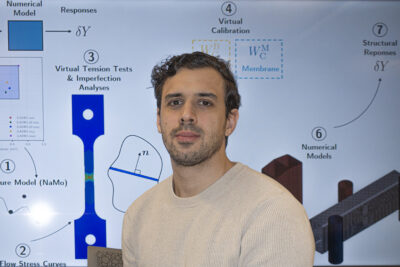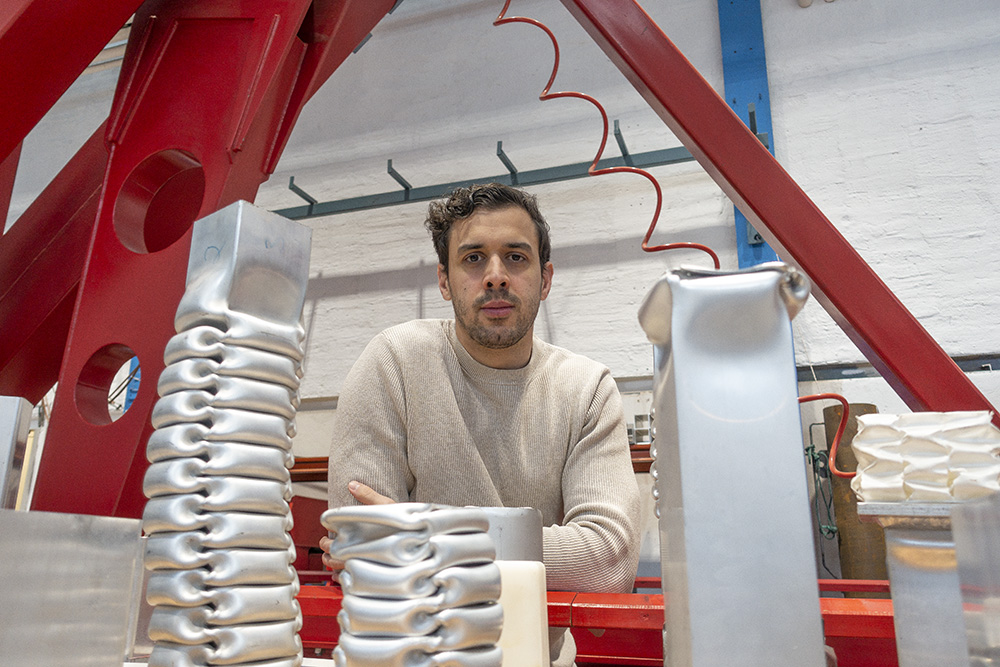Marcos Fernandez’s research brings us closer to that day when physical tests become history. His efforts also pave the way for safer cars, planes, ships, and other structures.
On 21 June, after almost four years of intensive research, he will defend his thesis. He has given it the title «On the use of a virtual laboratory for aluminium alloys: application to large-scale analyses of extruded profiles». The overall aim is to improve the cutting-edge technology for large scale modelling and simulation of aluminium components. In particular, he focuses on extruded profiles designed to absorb energy. You will find them in the wheel suspensions, bumper systems, engine cradles, crash boxes, and other car parts.
A VIRTUAL LABORATORY WITH A ROW OF BENEFITS

Marcos Fernandez’s work extends and refines the Virtual Laboratory (VL) to design aluminium alloys. The VL has been developed in close collaboration between SFI CASA and the parallel project FractAl (2016-2022), led by Professor Odd Sture Hopperstad. The idea is to replace costly and time-consuming physical tests with virtual testing on a computer.
It brings a row of benefits for those who put it to use, and it is one of the main achievements of CASA. A carmaker that switches to an entirely virtual design process can reduce the time from when a new idea is born until thoroughly tested, from 2 months to 24 hours.
PART OF THE ALLDESIGN PROJECT
Marcos Fernandez is also part of the NTNU Digital Transformation project Rational Alloy Design (ALLDESIGN). The project aims to create a digital materials design platform for intermetallic alloy design. The primary focus is aluminium-based alloys, which also are of great importance for the Norwegian industry. His main supervisor is Associate professor David Morin, who plays a vital role in establishing and developing the Virtual Laboratory.
READ MORE: David Morin Shares Virtual News
Fernandez feels confident that his work will make a difference in the industry. «How big or how small, I do not know. Nevertheless, I am sure it does», he says. Crash-testing cars and components are expensive, takes much time and harms the environment. The VL enables more robust and faster simulations of greater variety. Also, as the producers run virtual tests before making the prototypes, products and components become safer.
Read more on sfi-casa.no

